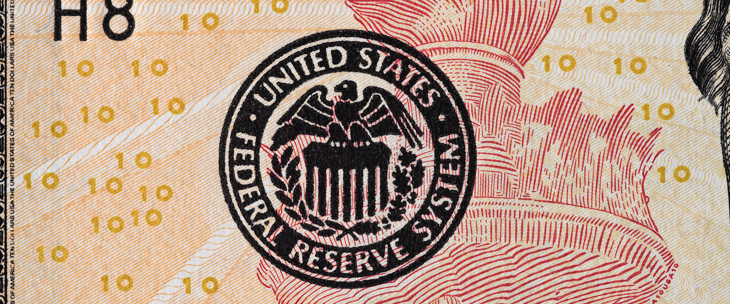
Does it mean that with the biggest buyer in the market reducing the demand for bonds interest rates are poised to rise?
A look at past periods of bond purchases (‘quantitative easing’, QE) reveals that during all past episodes of Fed balance sheet expansion, contrary to intuition, ten-year US interest rates did increase. The opposite is true for the periods after the end of QE episodes, during the tapering of bond purchases, and actual balance sheet reduction. QE1 and QE2 simply ran out without tapering and were both followed by strong drops in US interest rates. When the Fed tapered bond purchases beginning in January 2014 at the end of QE3, interest rates fell by 55 bp to 2.35% at that time. And during the Fed’s active balance sheet reduction after stopping to reinvest matured bonds and coupons between January 2018 and July 2019, the ten-year US Treasury rate dropped a whole percentage point to 1.85%. The historical evidence therefore shows that the reduction in bond purchases was always associated with falling rates.
Ten-year US interest rates during quantitative easing, tapering and Fed balance sheet reduction

Figure 1: The chart shows the yield on ten-year US Treasury bonds (right scale) and the total assets of the US Federal Reserve in trillions of USD (left scale). The orange areas are periods when the Federal Reserve‘s quantitative easing programmes were active. The blue areas are periods when the Federal Reserve either scaled back its purchase programmes or actively reduced its balance sheet.
Source: Bloomberg L.P., Federal Reserve Bank of New York
While this evidence seems counter-intuitive at first glance as the lower demand by the biggest buyer in the market should, all else being equal, lead to rising rates, it is obvious that all else did not remain equal. There is strong evidence that quantitative easing supports risk assets like equities and a reduction in central bank purchases provides headwind to their prices. Therefore, investors may partly substitute their holdings in riskier assets with allegedly safer government bonds during periods of tapering. This substitution effect compensates for the lower central bank demand and supports falling rates.
Moreover, looking on the supply side, governments may also issue fewer bonds during periods of lower bond purchases as central banks will most likely taper when growth is robust and there is less need for government debt financing. These arguments and the empirical evidence of past periods with reduced central bank activity suggest that bond investors do not need to fear the beginning of the tapering of the current quantitative easing episode.